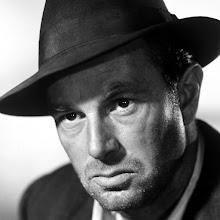TOWARDS the end of his 27 years in jail, Nelson Mandela began to yearn for a hotplate. He was being well fed by this point, not least because he was the world’s most famous political prisoner. But his jailers gave him too much food for lunch and not enough for supper. He had taken to saving some of his mid-day meal until the evening, by which time it was cold, and he wanted something to heat it up.
The problem was that the officer in charge of Pollsmoor prison’s maximum-security “C” wing was prickly, insecure, uncomfortable talking in English and virtually allergic to black political prisoners. To get around him, Mr Mandela started reading about rugby, a sport he had never liked but which his jailer, like most Afrikaner men, adored. Then, when they met in a corridor, Mr Mandela immediately launched into a detailed discussion, in Afrikaans, about prop forwards, scrum halves and recent games. His jailer was so charmed that before he knew it he was barking at an underling to “go and get Mandela a hotplate!”
[...]
This makes sense. Elections are all very well, but the moment when black South Africans started cheering for a mostly-white rugby team, when white fans in the stadium tried gamely to sing a Zulu miners’ anthem and when Mr Mandela donned the green jersey of the Springboks—“It was the moment I realised that there really was a chance this country could work,” gushes a teary-eyed rugby official.
Mr Carlin brings the story alive by telling it through the eyes of a broad spectrum of South Africans. Among these is Desmond Tutu, the Nobel prize-winning archbishop of Cape Town, who was in America on the day of the final and had to find a bar that would let him watch it at an ungodly hour of the morning. Also, Niel Barnard, a former chief spy for the apartheid regime, who used to keep a thick file on Bishop Tutu. And Justice Bekebeke, a young township firebrand who killed a policeman for firing at a child during a riot and spent time on death row.
Mr Bekebeke is the most interesting of Mr Carlin’s portraits. On the morning of the match, he is still too bitter about a lifetime of injustice to support the Springboks. But then, something changes. The surging emotion of the event sweeps him along. “I just had to give up, to surrender,” he says, “And I said to myself, well, this is the new reality. There is no going back: the South African team is now my team, whoever they are, whatever their colour.”
The Economist, Rugby's role in his rise, 11 Sept 2008
===============
The image of Mandela as the embodiment of white South Africa's worst fears endured during the 27 years he spent in jail – as it did for the rugby-loving Afrikaner rump on February 11, 1990, the day he walked out of prison.
Three and half years later – two years before the rugby World Cup – tens of thousands of Afrikaners were bracing themselves for war. United under the banner of the far right Volksfront, they vowed to stop Mandela from taking power.
They did not succeed, largely because Mandela secretly invited their leaders to his home for tea and persuaded them, over time, to abandon their guns. A good half of the aspirant Boer freedom-fighters did not agree with their leaders, which meant that after Mandela became president in May 1994 the prospect of Boer terrorism remained alarmingly real.
With far more people trained in how to make war than the IRA ever had, they had it in them to undermine the stability of the post-apartheid democracy and do terrible damage to the economy.
That was why Mandela set it as his number one strategic priority during his five-year presidency to cement, as he put it, the foundations of the new South Africa; to reconcile whites with the black majority to whom they had done so much harm.
It was a Herculean political challenge but in the World Cup, to be played in South Africa a year after he came to power, Mandela saw an opportunity not to be missed.
The ANC had spent years using rugby as a stick with which to beat white people (talk to any prominent Afrikaner from those days and they'll tell you how much the international rugby boycott hurt); Mandela said, why not use it now as a carrot? Why not use the Springbok team to unite the most divided nation on earth around a common goal?
So, barely a month after he had taken office, he invited François Pienaar, the Springbok captain, for tea at his office in Pretoria. He wooed him instantly ("I felt like a wide-eyed kid listening to an old man telling stories," Pienaar told me) and, without the big blond son of apartheid quite knowing it yet, recruited him to the new South Africa cause.
Mandela's challenges did not only lie on the white side of the apartheid fence. He had to do some tough political persuasion among his own black supporters too.
They had been brought up to detest rugby. Next to the old anthem and the old flag, there existed no more repellent symbol of apartheid than the green Springbok shirt. That was why the blacks-only pens at rugby stadiums were always full on international match days, cheering the Springboks' opponents.
But Mandela set himself the mission of converting black South Africans to the perplexing notion that "the Boks belonged to all of us now", as he put it to me.
And this even though he knew that the team for the 1995 World Cup would be all white, with the possible exception of a "coloured" wing called Chester Williams.
"They booed me! " Mandela recalled, chuckling only long after the event. "My own people, they booed me when I stood before them, urging them to support the Springboks!"
But eventually, Mandela being a natural-born persuader and black South Africans an amazingly forgiving lot, he achieved his goal. Come the morning of the final, on June 24, 1995, black South Africans were as excited as their white compatriots, and as desperate to see the Amabokoboko (as the Sowetan newspaper dubbed the national team) win.
Pienaar and company deserved much of the credit for this. The clever, politically sharp CEO of the South African rugby union, Edward Griffiths, had come up with a slogan that was brilliant in its simplicity: "One Team, One Country.
" Morné du Plessis, a former Springbok captain and now team manager, had worked hard to make the players see that they had a role to play in helping Mandela unite the country. It was du Plessis who arranged for the players to learn the old song of black resistance, now the new national anthem, Nkosi Sikelele Afrika (God Bless Africa).
At a choir session in Cape Town, the Springbok players belted out the black song with feeling, the vast second-row Boer Kobus Wiese leading the choral charge.
As the World Cup unfolded, following a great inaugural victory by South Africa over Australia, the players as well as the white fans were struck by the growing enthusiasm of the hitherto rugby-illiterate black population.
The sight of those vast Boers singing their song at the start of each game and then winning it was a combination increasingly difficult for black South Africans to resist. This in turn nourished the Afrikaners' budding sense of new South African fellow feeling.
Mandela's coup de grâce, the final submission of white South Africa to his charms, came minutes before the final itself when the old terrorist-in-chief went on to the pitch to shake hands with the players dressed in the colours of the ancient enemy, the green Springbok shirt.
For a moment, Ellis Park Stadium, 95 per cent white on the day, stood in dumb, disbelieving silence. Then someone took up a cry that others followed, ending in a thundering roar: "Nel-son! Nel-son! Nel-son!"
And that was almost it. White South Africa had crowned Mandela king with the fervour black South Africa had done five years earlier at a stadium in Soweto, in the week after his release.
But there was still the matter of a game to be played against a formidable New Zealand team – and, in the view of every sane rugby pundit alive, the Springboks didn't stand a chance.
They were wrong. With Mandela playing as an invisible 16th man, Joel Stransky, the one Jewish player in the Springbok team, kicked the winning drop goal in extra time.
Mandela emerged again, still in his green jersey, and, to even louder cries of "Nel-son! Nel-son!", walked on to the pitch to shake the hand of François Pienaar.
As he prepared to hand over the cup to his captain, he said: "François, thank you for what you have done for our country." Pienaar, with extraordinary presence of mind, replied: "No, Mr President. Thank you for what you have done."
I spoke to a friend, a white, anti-apartheid veteran who was in the thick of the Boer throng at the stadium that day. As he put it: "There wasn't a dry eye in the house." There wasn't a dry eye in the country. Everybody celebrated. Every township, every white suburb: one country at last.
How Nelson Mandela won the rugby World Cup, John Carlin, The Telegraph, 19 Oct 2007
Se apropie Crăciunul, luați un cadou inspirat!
Acum 55 de minute





1 comentarii:
bun politician :D
fish
Trimiteți un comentariu